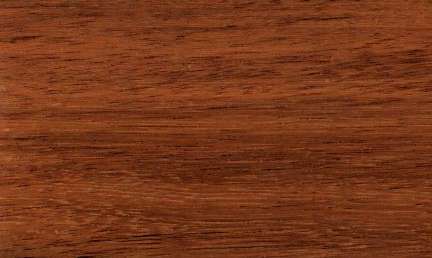
Kekatong (Cynometra ramiflora)
Family: Leguminosae
Common names: Balitbitan, Belangkan, Gal mendora, Gulos, Gulus, Hambabalanak, Irapu, Iripa, Irippa, Irudhu, Kahsilah, Kameu, Kammau, Kanaka, Kanakamara, Katong, Katong laut, Kekatong, Kelengui, Ketenguit, Ketunguit, Kumoh, Madhuka, Mahuka, Mang kha, Mangkha, Moivi, Myin-ka, Myinga, Myinka, Myinkabin, Naipudukan, Ommo, Omo, Oringen, Pamortisan, Shingar, Shingra, Yeminga
Distributed in: Burma, Cambodia, China, India, Indonesia, Laos, Malaysia, Myanmar, Papua New Guinea, Philippines, Solomon Islands, Sri Lanka, Thailand, Vanuatu, Vietnam (Oceania and S.E. Asia)
Distribution overview: Common in the tidal forests of the Andamans and Sunderbans, but is rather sacrce in other areas in India. It is also found in Burma, Sri Lanka, and the Philippines.
Common uses: Agricultural implements, Balusters, Baskets, Boat building: framing, Broom handles, Building construction, Building materials, Cabinetmaking, Carvings, Chemical derivatives, Construction, Crossties, Domestic flooring, Door, Excelsior, Factory flooring, Flooring, Flooring: commercial heavy traffic, Food containers, Fuelwood, Furniture, Handles, Handles: general, Heavy construction, Interior construction, Joinery, Ladders, Light construction, Mine timbers, Moldings, Parquet flooring, Poles, Railroad ties, Shafts/Handles, Sporting Goods, Stairworks, Stringers, Sub-flooring, Tool handles, Toys, Turnery, Vehicle parts, Veneer: decorative, Woodwork
Environment profile: Vulnerable in parts of its natural habitat
Tree size:
Stems are often of poor form
Colors: the heart isRed, Reddish brownand the sapwoodPaler than heartwood, Pink/Red .The grain isStraight, the textureMedium to coarseand the lusterLustrous
Natural durability: Susceptible to attack from powder post (Lyctid & Bostrychid) beetles, Susceptible to marine borer attack
Odor: No specific smell or taste
Kiln Schedules: T6 - D4 (4/4) US/T6 - D4 (4/4) US
Drying Defects: Severe surface checking, Severe twisting/warping
Ease of Drying: Variable results.
Tree Identification: Bole/stem form is not buttressed
Comments: General finishing qualities are rated as good
Boring: Fairly easy to very easy
Carving: Fairly Easy to Very Easy
Cutting Resistance: Easy to saw
Gluing: Fairly Difficult to Very Difficult
Mortising: Fairly Easy to Very Easy
Moulding: Fairly Easy to Very Easy
Movement in Service: Fairly Easy to Very Easy
Nailing: Nails hold poorly, Pre-Boring Recommended
Planing: Planes well, to a good finish
Resistance to Impregnation: Resistant sapwood
Response to hand tools: Easy to machine
Routing recessing: Fairly Easy to Very Easy
Veneering qualities: Easy to cut, Suitable for peeling
Screwing: Fair to Good Results, Pre-boring recommended; Turning: Fair to Good Results
Painting: Fairly Difficult to Very Difficult
; Polishing: Very Good to Excellent;
- Numerical data Metric
- Numerical data English
- Strength properties
- References
 |
 |
 |
 |
| Item |
Green |
Dry |
Metric |
| Specific Gravity |
0,72 |
|
|
| Density |
|
897 |
kg/m3 |
| Bending Strength |
936 |
1305 |
kg/cm2 |
| Crushing Strength |
457 |
668 |
kg/cm2 |
| Hardness |
|
|
kg |
| Impact Strength |
|
|
cm |
| Shearing Strength |
|
|
kg/cm2 |
| Stiffness |
129 |
174 |
1000 kg/cm2 |
| Tangential Shrinkage |
|
|
% |
| Radial Shrinkage |
3 |
|
% |
| Weight |
977 |
881 |
kg/m3 |
| Maximum Load |
|
|
cm-kg/cm3 |
| Toughness |
|
|
cm-kg |
| Static Bending |
|
|
kg/cm2 |
|
 |  |  |  | | Item | Green | Dry | English | | Bending Strength | 13313 | 18563 | psi | | Density | | 56 | lbs/ft3 | | Maximum Crushing Strength | 6502 | 9508 | psi | | Stiffness | 1842 | 2479 | 1000 psi | | Specific Gravity | 0.72 | | | | Weight | 61 | 55 | lbs/ft3 | | Radial Shrinkage | 3 | | % | | Tangential Shrinkage | 7 | | % | |
Density (dry weight) = 53-60 lbs/cu.ft.
Density (dry weight) = 67-75 lbs/cu. ft.
Density (dry weight) = 61-67 lbs/cu. ft
Shrinkage, Radial = small
Density (dry weight) = 46-52 lbs/cu. ft.
Shrinkage, Tangential = small
Shrinkage, Tangential = fairly large
Shrinkage, Tangenital =moderate
Shrinkage, Radial = moderate
Bending strength in the air-dry condition (about 12 percent moisture content) is very high. Compression strength parallel to grain, or maximum crushing strength, is very high - higher than in Teak or Hard maple. It is a very heavy wood. The wood is very dense.
Bourdillon, T.F.,1908,The Forest Trees of Travancore,Travancore Government PressBrowne, F.G.,1955,Forest Trees of Sarawak and Brunei and their Products.,Government Printing Office, Kuching, SarawakBurgess, P.F.,1966,Timbers of Sabah,Sabah Forest Record, no.6Chudnoff, M.,1984,Tropical Timbers of the World,U.S.A. Department of Agriculture, Forest Service, Forest Products,Laboratory, Madison.Desch, H.E.,1954,Manual of Malayan Timbers (2 vols,Malayan Forest Records,no.15Eddowes, P.J. 1977. Commercial Timbers of Papua New Guinea - Their Properties and Uses. Forest Products Research Center, Office of Forests, Department of Primary Industry, Papua New Guinea.I. Soerianegara and R.H.M.J. Lemmens (Editors,1993,Plant Resources of South-East Asia 5,(PROSEA, 1,Timber trees: Major commercial timbers,Pudoc Scientific Publishers, Wageningen 1993Keating, W.G., Bolza, E.,1982,Characteristics properties and uses of timbers. South East Asia, Northern,Australia and the Pacific,C.S.I.R.O. Div. Chemical Technology,Inkata Press,1Oey Djoen Seng,1964,Specific gravity of Indonesian woods and its significance for practical,use,Communication No.1. Lembaga Penelitian Hasil Hutan, Bogor, IndonesiaRamesh, Rao K., Purkayastha, S.K.,1972,Indian Woods - Their Identification Properties and Uses,Dehra Dun India,Vol. 3Rao, K.R. and S.K. Purkayastha. 1972. Indian Woods - Their Identification, Properties and Uses, Volume III - Leguminosae to Combretaceae. Published by the Manager of Publications, Delhi, India.Reyes, L.J.,1938,Philippine Woods,Commonwealth of the Philippines Department of Agriculture and Commerce,Technical Bulletin,No.7Whitmore, T.C. (Ed.,1972,Tree Flora of Malaya A Manual for Foresters Volume 1,Forest Department Ministry of Agriculture and Lands Malaysia
|








